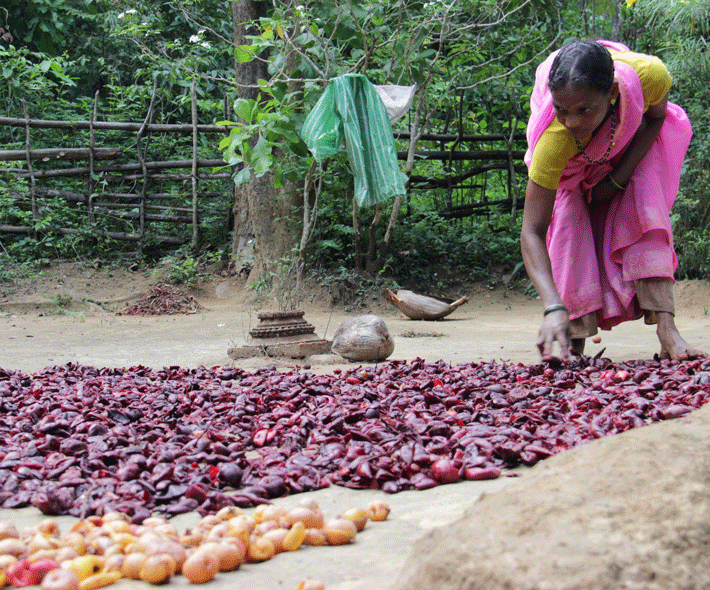Sustainably managing non-timber products to improve livelihoods, equity and forests
- From
-
Published on
19.08.18
- Impact Area

New Guidelines for Equitable and Sustainable Non-timber Forest Product Management offer field-tested strategies and good practices on how to pursue the multiple goals of gender equality and social inclusion, environmental integrity, and livelihoods improvement through the sustainable use and management of non-timber forest products.
An estimated 1.6 billion people worldwide live in and around forests, and depend on them for their livelihoods. However, forest degradation and deforestation are accelerating, and endangering local livelihoods. The careful management and conservation of biodiversity are fundamental for sustaining ecosystems and livelihoods but are increasingly difficult to achieve in contexts of persistent poverty, a growing international demand for timber and non-timber forest products (NTFP), and climate change. Moreover, at the local level, decision-making power on management of forests and forest products, and the sharing of related costs and benefits are often inequitably distributed across groups, marginalizing people based on gender, caste, ethnicity, socioeconomic status, and other factors of social differentiation.
To address some of these challenges, many countries have adopted community-based or joint forest management approaches. It is increasingly recognized that gender equity and social inclusion are key components of effective and efficient forest management approaches, as well as a goal. Yet, they are also a complex challenge with deep-seated causes and effects, including poor governance, corruption, and lack of tangible and equally distributed benefits, all of which hinder sound forest management.
![]()
Related news
-

From Dirt to Decision-Making: Governance and Soil Health Must Go Hand in Hand
Multifunctional Landscapes Science Program26.11.25-
Biodiversity
-
Environmental health
-
Environmental health & biodiversity
In October, the world convened in Des Moines for the 2025 Borlaug Dialogue under the…
Read more -
-

ICRISAT’s Solar-Powered Water Hyacinth Harvester Recognized Among India’s Top 100 Innovations of 2025
International Crops Research Institute for the Semi-Arid Tropics (ICRISAT)18.11.25-
Environmental health
-
Poverty reduction, livelihoods & jobs
ICRISAT's Novel Solar-Powered Water Hyacinth Harvester has now earned a place in the prestigious To…
Read more -
-

CGIAR Multifunctional Landscapes at COP30: Advancing Adaptation and Nature-Based Solutions
Multifunctional Landscapes Science Program10.11.25-
Adaptation
-
Biodiversity
-
Environmental health
-
Environmental health & biodiversity
-
Mitigation
COP30 in Belém, Brazil is being heralded as a pivotal “COP of adaptation” and a…
Read more -
